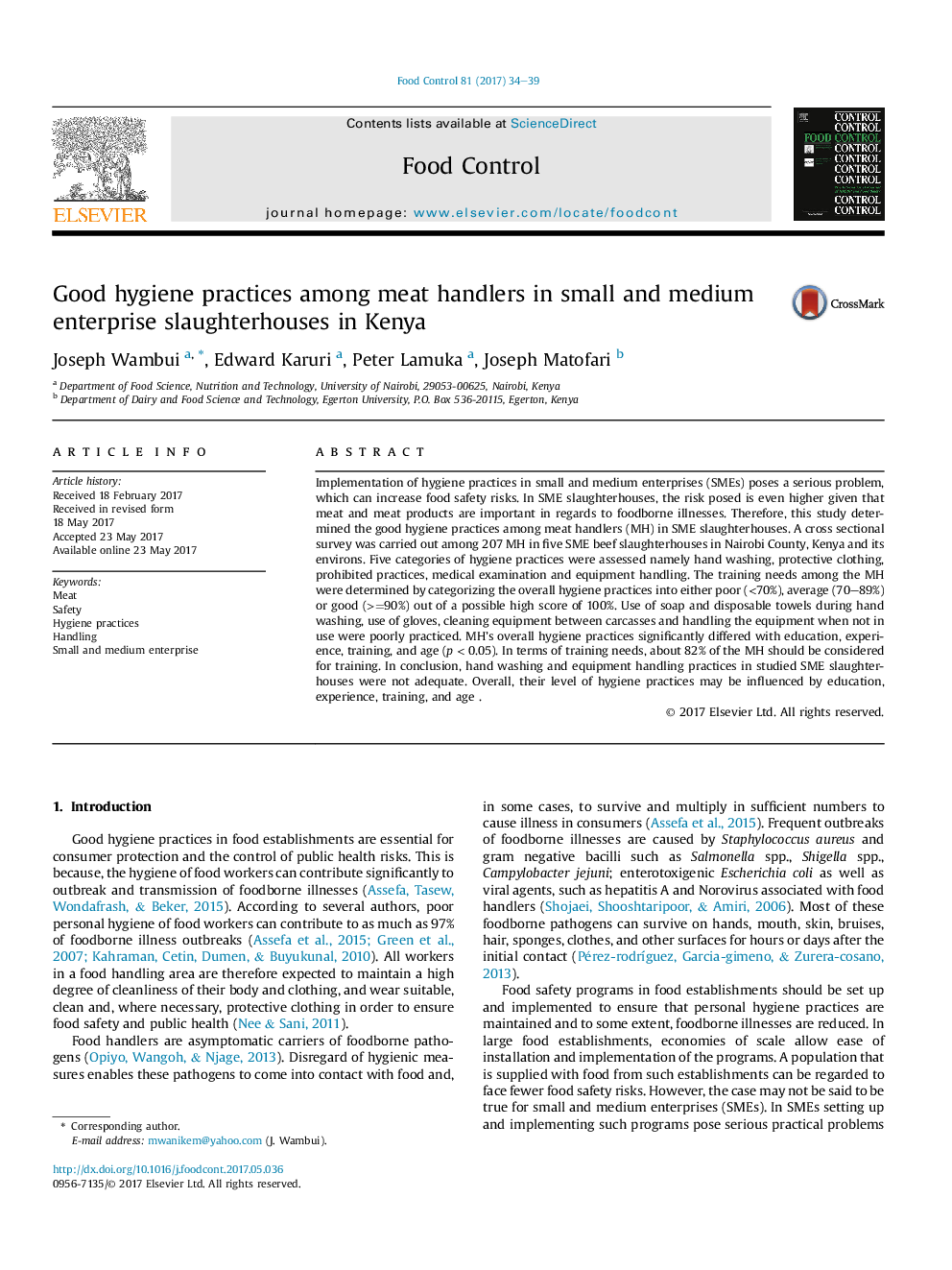| کد مقاله | کد نشریه | سال انتشار | مقاله انگلیسی | نسخه تمام متن |
|---|---|---|---|---|
| 5767176 | 1628383 | 2017 | 6 صفحه PDF | دانلود رایگان |
- Hygiene practices in small and medium enterprise slaughterhouses were assessed.
- Hand washing and equipment handling practices were not adequate.
- Hygiene practices may be influenced by experience, profession and training.
- About 82% of the meat handlers should be considered for training.
Implementation of hygiene practices in small and medium enterprises (SMEs) poses a serious problem, which can increase food safety risks. In SME slaughterhouses, the risk posed is even higher given that meat and meat products are important in regards to foodborne illnesses. Therefore, this study determined the good hygiene practices among meat handlers (MH) in SME slaughterhouses. A cross sectional survey was carried out among 207 MH in five SME beef slaughterhouses in Nairobi County, Kenya and its environs. Five categories of hygiene practices were assessed namely hand washing, protective clothing, prohibited practices, medical examination and equipment handling. The training needs among the MH were determined by categorizing the overall hygiene practices into either poor (<70%), average (70-89%) or good (>=90%) out of a possible high score of 100%. Use of soap and disposable towels during hand washing, use of gloves, cleaning equipment between carcasses and handling the equipment when not in use were poorly practiced. MH's overall hygiene practices significantly differed with education, experience, training, and age (p < 0.05). In terms of training needs, about 82% of the MH should be considered for training. In conclusion, hand washing and equipment handling practices in studied SME slaughterhouses were not adequate. Overall, their level of hygiene practices may be influenced by education, experience, training, and age .
Journal: Food Control - Volume 81, November 2017, Pages 34-39
